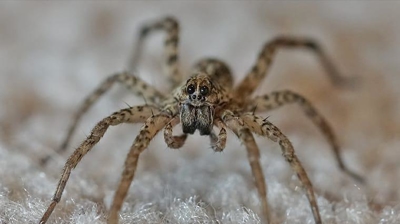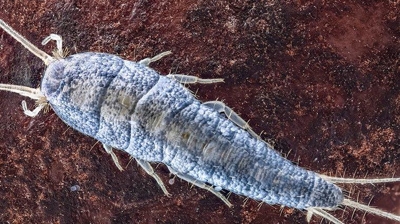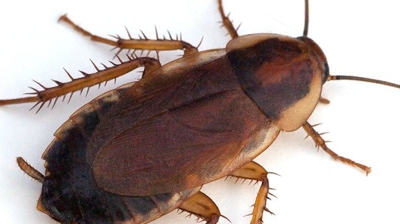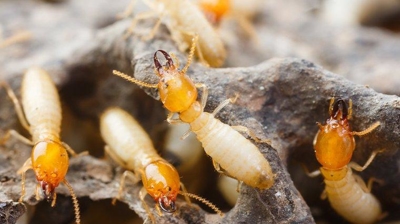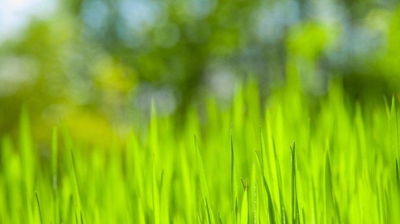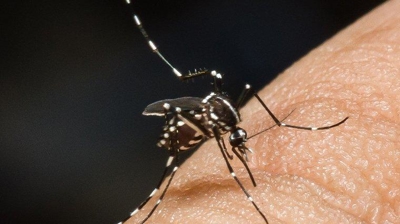
Termites
What are termites?
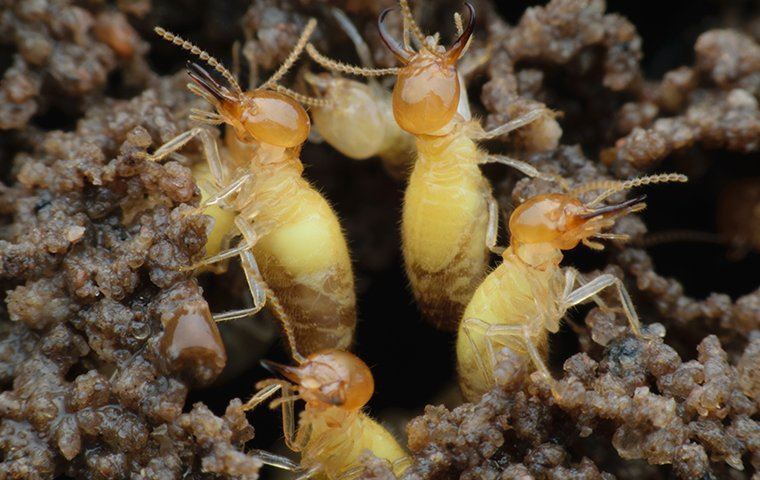
Similar to ants, termites live together in colonies, but that is where the similarities end. While many people think the two are related, termites are actually closely related to cockroaches. Termites are unique creatures as they are one of the few able to convert cellulose into a usable food source. Subterranean termites are a common species of termites found living throughout Texas, Utah, Arizona, Colorado, and Oklahoma, while Formosan termites have been detected in Texas. These wood-destroying pests often find ways to invade our yards and structures.
Formosan Termites
A type of subterranean termite that lives in vast colonies, Formosan termite colonies sometimes have more than a million members. This termite species' large colony size and aggressive feeding habits allow them to cause significant damage in just a few short months, often without raising suspicion. Formosan termites are known as "super termites" because of the extensive structural damage they cause. They can hollow out a piece of wood, leaving only a thin outer shell. These termites create both underground nests and aerial nests. To maintain their high moisture needs when nesting above the ground, they generate carton nests.
Subterranean Termites
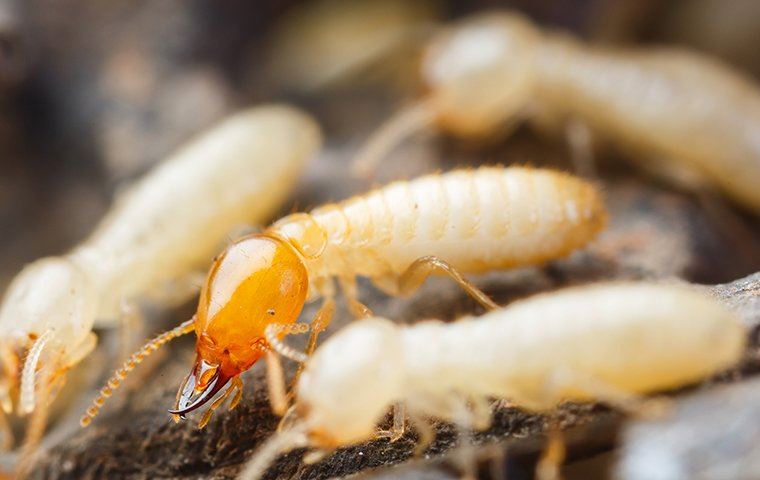
Subterranean termites live together in large colonies, but their colonies are generally smaller in size than those of the Formosan termites. Though their colonies have fewer members, the damage they cause across the U.S. each year is high because they are more widespread. Subterranean termites nest solely under the ground, mainly traveling through the soil from their nest to a food source. However, when they need to travel above ground, subterranean termites create and move through mud tubes which they use to protect themselves from dehydration and predators.
Termite colonies divide their members into groups or castes, consisting of workers, soldiers, and reproductives (kings and queens). Below is a brief description of each caste:
- Workers are the smallest in size of the three castes, but make up most of the colony. In general, workers and nymphs are soft-bodied and look like larvae. These termites are wingless, blind, and spend most of their life in the ground, nest, or inside the piece of wood they are feeding on.
- Soldiers have worker-like bodies, only with hard, darker-colored heads and large jaws. They use their elongated head and jaws to help them protect the colony from danger.
- Reproductive members of the colony are winged, have hard exoskeletons, and are darker in color. They have two sets of wings equal in length and are almost twice the size of the termite's body. These reproductive members are also referred to as swarmers.
Are termites dangerous?

Why Choose White Knight Pest Control?
-
Expansive Service AreaWe have local offices in several states ensuring accessibility to quality pest control wherever you are!
-
18+ Years in BusinessOur goal as a business continues to be building trusting relationships with our customers & local communities.
-
Customized Treatment PlansEvery home and business is unique! We will tailor a pest control plan to fit your specific needs and budget.
-
Pest Specific Treatment OptionsWhether you're looking for general pest control or targeting one pest specifically, we've got you covered.
Where Will I Find Termites?
Subterranean Termites - Subterranean termites move into a home through wood floor joists and then into the structural wood behind walls or under floors. They regularly invade water-damaged wood near window sills, water pipes, air conditioners, or other areas where moisture is present.
Formosan Termites - Formosan termites move inside through damaged roof shingles or spaces in exterior walls. You'll typically find them feeding on wood and other materials located below ceilings and between walls voids.
Both subterranean and Formosan termites feed on wood that's out of our view which is why finding a termite infestation is so difficult. They are not like ants that freely wander around your home's surfaces; people rarely see termites due to their reclusive nature.
How do I get rid of termites?
Trying to deal with termites on your own is never the best course of action. Instead, partnering with an experienced pest control professional is the best way to get rid of termites. At White Knight Pest Control, we protect properties from termites. We understand how stressful, frustrating, and expensive dealing with termites can be. Our professionals provide the support and services needed to completely eliminate these wood-destroying pests from properties in our service areas.
Our ongoing termite control services, including inspection, treatment, and monitoring, will solve your termite problem and prevent them from returning. To learn more about our termite control solutions and how we can partner together to keep termites away from your residential or commercial property, reach out to us today!
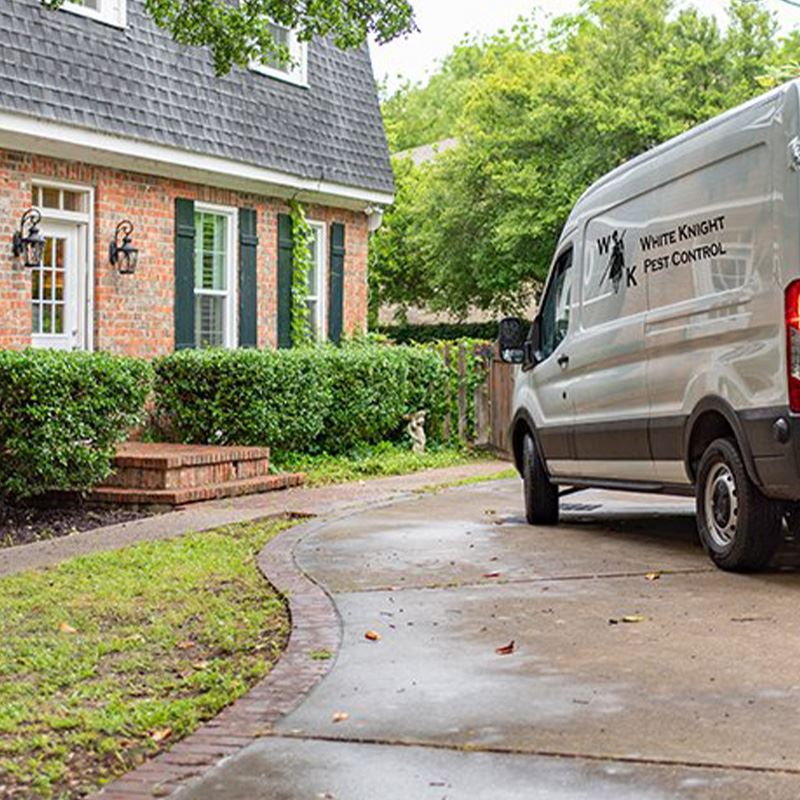
How Can I Prevent Termites in the Future?
At White Knight Pest Control, we will help you prevent problems with termites using our regular treatments. In conjunction with our comprehensive services, the following prevention tips will help you keep termites out of your Texas, Utah, Arizona, Colorado, or Oklahoma home!
- Eliminate entry points: Seal up spaces in the foundation. Make sure to replace missing or damaged roof shingles. Limit soil to wood contact around your home and on your property, such as porch steps, deck posts, wooden trim, or shingles. Repair gaps discovered in your home's exterior walls.
- Eliminate food sources: Replace mulch with non-organic gardening materials like crushed rock or rubber mulch. Rake back leaves and other debris away from the foundation of your home. Remove fallen trees, leaf piles, and other debris from your yard. Get rid of older or decaying fences, wooden furniture, or wooden play structures.
- Eliminate excess moisture: Keep gutters and downspouts free of debris to allow rainwater to flow away from your home's exterior. Place weather stripping around windows and doors to prevent water from seeping inside. Repair areas in your lawn that allow water to collect. Repair leaky pipes, fixtures, and drains. Use dehumidifiers to dry out damp basements and remove wood from your home damaged by water.
Helpful Termite Articles
What Our Customers Are Saying
-
"Our technician was Mark and he was very polite, asked questions and did an excellent job doing the service."
Our technician was Mark and he was very polite, asked questions and did an excellent job doing the service. Thank you.
Bill Tefft -
"They are professional, but super friendly and their services are priced wonderfully."
Forest was very kind and professional. He did the work that was explained to us the previous appointment and made sure ...
Lori Bonine -
"Thank you, White Knight!"
Great service! Alex S helped out and he was really efficient, fast and extremely nice and polite. Thank you, White Knight!
Michael Leach -
"Great service!"
Great service! Alex S. helped out and he was really efficient, fast, and extremely nice and polite. Thank you, White Knight!
Eliot Garcia -
"He listened to my concerns, answered my questions, walked me through what he did and how it was going to help resolve our ant issue."
We've been working with White Knight for a few months now. I appreciate that when I called to get a reservice to address an ...
Christine Rominski -
"Tyrell did an amazing job when he came to service our house."
Tyrell did an amazing job when he came to service our house. He took his time and was very informative about the ant hills we ...
Rodin Chery -
"Hope service continues to be this great!"
Aaron showed up to do my first-ever treatment today. He was very kind and I was completely comfortable letting him into my ...
Cortney Love -
"Highly recommend."
Shannon is a very personable technician. Thorough and well-mannered person. Highly recommend. Great job!!!
Hector Suarez
Recent Blog Articles
View our blogs and resources below.
-
 Denver, CO Homeowners' Ultimate Spider Control GuideRead More
Denver, CO Homeowners' Ultimate Spider Control GuideRead More -
 Six Easy & Effective Silverfish-Prevention Tips For San Antonio Property OwnersRead More
Six Easy & Effective Silverfish-Prevention Tips For San Antonio Property OwnersRead More -
 Effective American Cockroach Control In Salt Lake CityRead More
Effective American Cockroach Control In Salt Lake CityRead More -
 What Not To Do About Termites On Your Fort Worth, TX PropertyRead More
What Not To Do About Termites On Your Fort Worth, TX PropertyRead More -
 The Damage Weeds Can Do To Your Salt Lake City LawnRead More
The Damage Weeds Can Do To Your Salt Lake City LawnRead More -
 Four Signs Your Houston Home Has A Bed Bug ProblemRead More
Four Signs Your Houston Home Has A Bed Bug ProblemRead More -
 The Trick To Effective Centipede & Millipede Control In Your Denver HomeRead More
The Trick To Effective Centipede & Millipede Control In Your Denver HomeRead More -
 A Handy Guide To Mosquito Prevention For Phoenix Property OwnersRead More
A Handy Guide To Mosquito Prevention For Phoenix Property OwnersRead More
